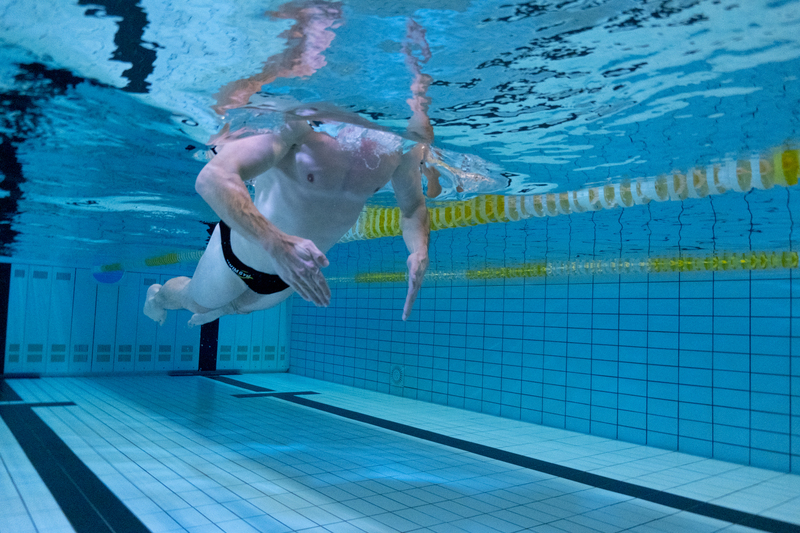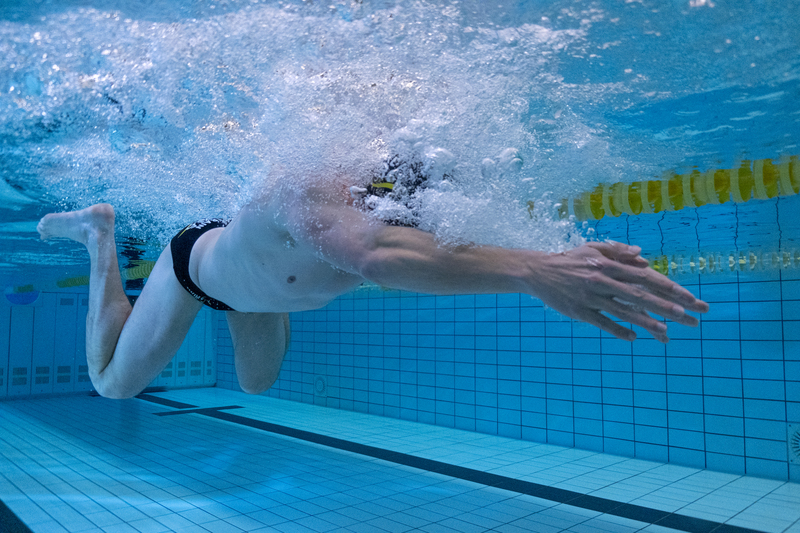Swimming blog - BREASTSTROKE The 3 elements of a powerful breaststroke
Breaststroke might not seem challenging as a stroke, but in professional swimming it is the most technical stroke of all. It’s extremely elegant to watch. Power is balanced with timing and coordination, while gliding through the water in the most streamlined way possible. To learn the stroke or take some time off your personal best just three elements are needed. Comprehend the three elements and your breaststroke will be elevated to the next level.
Streamline
We couldn’t have started anywhere else than the streamline. In breaststroke each stroke starts and ends in a streamline. The faster you get into the streamline position, the better. During the start of the streamline position the body experiences the greatest forward propulsion. So don’t be too eager to start the pull, but wait a few counts. This will build a good glide and get you into the magical rhythm of the stroke.
During the streamline the back of the head and the neck is lined up with the entire spine, the hips are kept high and the body is fully extended. It’s vitally important to keep the body near the surface at this point in the stroke. From this streamlined position you will initiate the pull, which is next on our list.
Pull
The pull begins with the hips and the outsweep. The hips are pressed slightly downwards as the hands separate and begin the outsweep. During the outsweep the palms of the hand are pitched outwards in which you push your hands out into a Y-shape.
Next, the insweep in which you sweep the hand downwards and slightly backwards in order to catch the water. Just imagine that you are sweeping out the inside of a large salad bowl. As the downward sweep begins, the hips will begin to fall. This will bring your chest and head up.

As the hands finish the inward sweep, the head will naturally be pushed out of the water. It is now that you should inhale. Do not move the head, pushing the hips down will bring the head up. If the head is lifted in separation to the spine the hips will drop too low. This will restrict the hips to reach the surface on the next stroke causing the streamline to be lost.
At last you will need to recover the arm to the starting position by bringing the elbows next to the body and pushing the hands as quickly as possible to the streamlined start position. It’s during the recovery that your head will come back down to the streamlined position.
You made the pull, you took a breath. What follows is the biggest contributor to your speed, namely the kick.
Kick
Before discussing the kick we should emphasize the hips a bit more. As discussed in breaststroke the hips have a major role when breathing. Pressing of the hips downwards during the pull leads to the head coming up to breathe. The hipmotion is also key to an effective kick.
By driving your hips down the heels of your feet will be drawn up towards your bum without breaking the streamline. Pressing of the hips will prevent the knees from coming forward. This will reduce the resistance you get from bringing the legs in position.
As you bring your heels up, aim to keep your knees narrow. When the heels are almost at the water surface, turn the feet outwards. By now the ankles should flare out and go wider than your knees.

Now it's time to kick feet back. At the completion of the kick, the feet should go all the way to full extension with the toes pointed and the feet together. It is very important that you finish the kick to produce as much speed as possible to then go into the streamline to glide and repeat.
What glues this all together is a correct timing. The closer the pull propulsion (the insweep) is followed by the kick propulsion (the kick back), the faster the swimmer. It’s during the insweep that the heels are brought up to the bum and it’s during the pull recovery that the kick backwards takes place. As you advance to the next level, you will be able to bring the timing of the pull propulsion and kick propulsion closer together.
If you have the opportunity, get filmed both above and below water to see your weak points. You can always get a video analysis to hear from our breaststroke experts how to improve. Another option is following our breaststroke course or working with some of our favorite drills.
Lots to teach, lots to learn, lots of calories to burn.
